Wählen Sie diesen Lizenztyp, wenn Sie eine app für iOS, Android oder Windows Phone entwickeln und Sie die Datei Font in den Code Ihrer mobilen Anwendung einbetten.
Invitation Script
von Intellecta Design
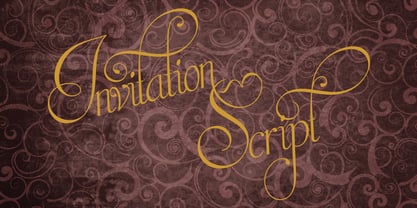
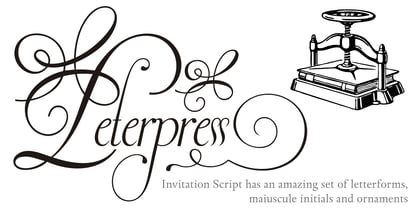
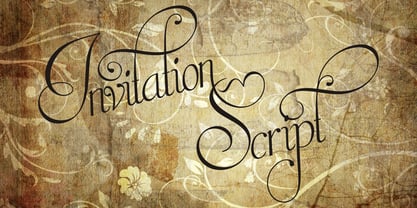
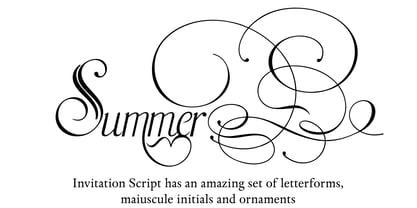

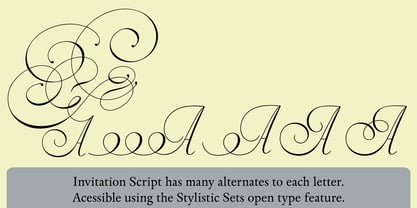
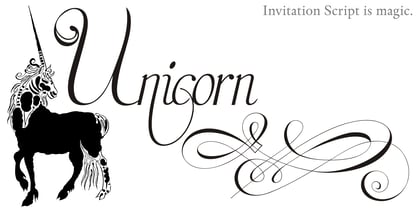
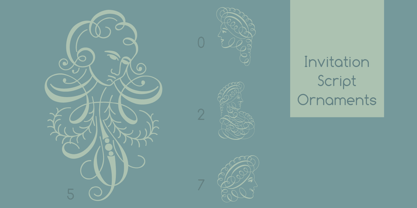
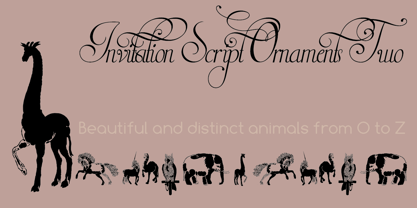

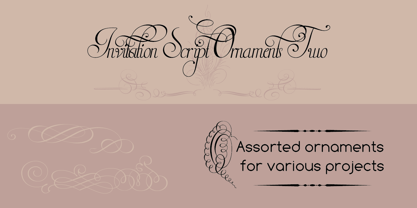


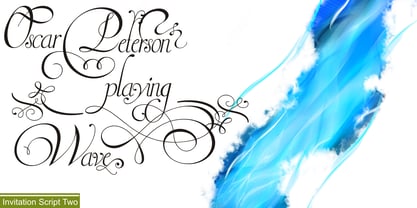
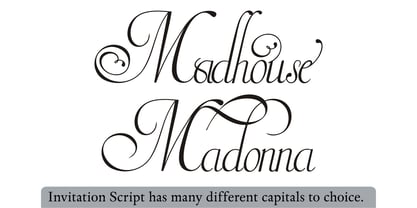

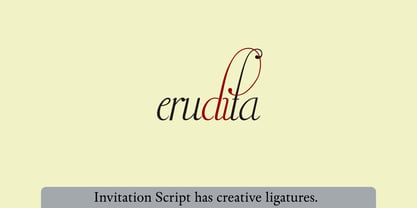
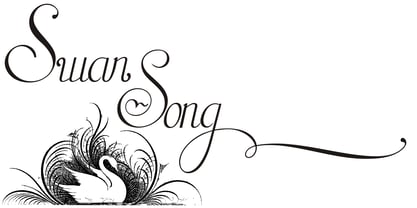
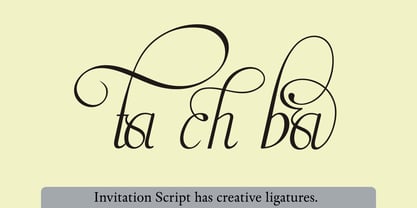
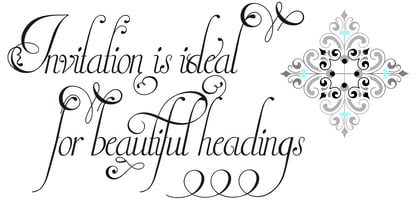


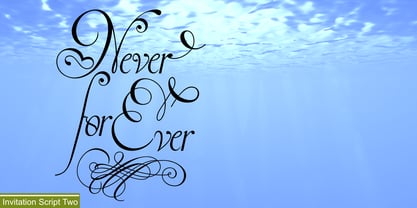

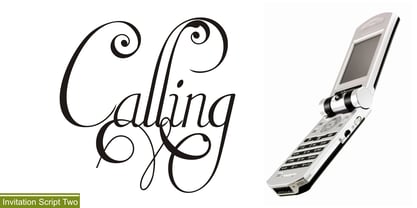
- Aa Glyphen
-
Bestes AngebotFamilienpakete
- Einzelschnitte
- Technische Daten
- Lizenzierung
Per Font:
$33.00
Paket mit 4 Fonts:
$132.00
Über die Schriftfamilie Invitation Script
Iza W und Intellecta Design sind stolz darauf, Invitation Script anzukündigen, eine moderne und saubere Wiederbelebung der klassischen Arbeit des portugiesischen Meisterschreibers Manuel de Andrade de Figueiredo, dessen Werk in "Nova Escola para aprender a ler, escrever, e contar (...)" (1722) zu sehen ist. Invitation Script ist nach Penabico und Van den Velde Script die dritte von Intellecta Design veröffentlichte Schriftfamilie. Invitation Script hat Originalbuchstaben, die von Iza W. entworfen wurden. Die kreative Leitung und die Kernprogrammierung wurden von Paulo W. übernommen. Chyrllene K. half bei der Arbeit an ungewöhnlichen und archaischen Stilen, was zu einer speziellen Font - Invitation Script Archaic (bald verfügbar) führte. Invitation ging von Andrade's Schriftstil aus und entwickelte sich zu einer üppigen Font Schriftfamilie. Das Ergebnis ist eine Schrift , die sich ideal für schöne Überschriften, Unterschriften, Kunstwerke, Titel und kurze handgeschriebenen Text. Die Invitation-Familie umfasst zwei Opentype Fonts mit mehreren Tabellen, drei zusätzliche Fonts für Ornamente und Fleurons sowie die Archaic Font mit einigen der Originalzeichen von Andrade. Eingebettet in die reguläre Fonts sind zusätzliche Buchstabensätze. Über 40 Variationen sind für bestimmte Buchstaben über die Tabelle Special Sets Opentype verfügbar. Die beiden regulären Versionen von Invitation Script enthalten die folgenden: (i) Einen umfangreichen Satz von Ligaturen, die Buchstabenvariationen für auffällige Designs oder zur Simulation einer echten Handschrift bieten. Diese sind über kontextuelle Alternativen und andere Open-Type-Funktionen zugänglich. (ii) Viele stilistische Alternativen für jeden Buchstaben (Groß- und Kleinbuchstaben, zugänglich über die Glyphenpalette, kodiert in den Bereichen der Special Set Opentype-Funktion). Da es über 1100 Glyphen in jedem Font gibt, empfehlen wir die Verwendung der Glyphenpalette. (iii) Eine Reihe von Ornamenten und Fleurons, die über die Glyphenpalette oder die Funktion Ornamente zugänglich sind. Zusätzliche Ornamente finden Sie in den beiden Ornamenten der Einladungsschrift Fonts. (iv) Anfangs- und Endbuchstaben mit künstlerischen Variationen, die über die Open-Type-Funktionen für Anfangs- und Endformen zugänglich sind. (v) Umfangreiche Unterschneidungsarbeiten: über 6000 Unterschneidungspaare, die von Hand gesetzt wurden, um Kollisionen zu vermeiden und komplizierte Buchstabenkombinationen zu erstellen, unter Verwendung von Schrägstrichen und anderen Ressourcen. Diese leistungsstarken Funktionen sind alle in InDesign, Illustrator, QuarkXpress und ähnlichen Programmen verfügbar. Wir empfehlen, die Magie dieser Font mit Hilfe der Glyphenpalette zu erkunden. Unsere Beispielillustrationen und PDF-Broschüren veranschaulichen die Kraft und den Schwung dieser kalligrafischen Schrift. Lassen Sie Ihrer Fantasie freien Lauf und verwenden Sie Invitation Script auf eine Weise, die Andrade nicht vorhersehen konnte. In Anwendungen, die nicht mit OpenType arbeiten, ist Invitation Script immer noch eine außergewöhnlich schöne kalligrafische Schrift , die es mit der Konkurrenz aufnehmen kann. Die reguläre Fonts enthält das komplette lateinische Alphabet, einschließlich mitteleuropäischer, vietnamesischer, baltischer und türkischer Schrift, mit einem vollständigen Satz diakritischer Zeichen und Interpunktionszeichen. --- 1 FIGUEIREDO, Manuel de Andrade de, 1670-1735 Nova Escola para aprender a ler, escrever, e contar. Offerecida á Augusta Magestade do Senhor Dom Joaõ V. Rey de Portugal. Primeira parte / por Manoel de Andrade de Figueiredo, Mestre desta Arte nas cidades de Lisboa Occidental, e Oriental. - Lisboa Occidental: na Officina de Bernardo da Costa de Carvalho, Impressor do Serenissimo Senhor Infante, 1722. - [18], 156 S., 44 f. grav. a buril : il., ; 2º (31 cm)Gestochenes königliches Wappen mit Engeln über der Stadt Lissabon, gestochenes Porträt des Autors (beides von Bernard Picart), (12)ff., 156 S., gestochener kalligraphischer Sektionstitel, 44 gestochene Tafeln. Holzstich-Culs-de-Lampe und Lettrinen. Sm. folio. "Andrade de Figueiredo wurde in Espirito Santo geboren, wo sein Vater Gouverneur der 'Capitania' war. Das schöne Porträt ist auf 1721 datiert und zeigt Figueiredo im Alter von 48 Jahren. Er war ein bedeutender Kalligraph und Schöpfer der portugiesischen Handschrift bis zur Herrschaft von Don José I (ca. 1755). Sein Werk lehnt sich an den Stil der großen italienischen Meister an, was die Verwendung von geklumpten Ober- und Unterlängen betrifft, und an Diaz Morante, den berühmten spanischen Schriftmeister, was die ausgefeilte Beherrschung der Hand angeht. Bei seinen Zeitgenossen war er als 'Morante portugues' bekannt" (Ekström). "Ce livre est un manuel, composé de quatre parties, destiné à apprendre à lire, à écrire, à conter ainsi que l'orthographe. Les planches comportent des examples d'écritures, d'alphabets et de textes ornés de remarquables traits de plume exécutés d'une main sûre et enjouée" (Jammes).
Herausgeber: Intellecta Design
Foundry: Intellecta Design
Eigentümer des Designs: Intellecta Design
MyFonts Debüt: August 12, 2013
Über Intellecta Design
Intellecta Design ist eine brasilianische Schriftgießerei, die sich mit der typografischen Forschung und der Wiederbelebung aller Formen alter Schriften und Handschriften beschäftigt. Sie durchsucht historische Kirchen, Museen, Antiquariate und ähnliche Einrichtungen, um Fonts aus alten Büchern und Dokumenten zu entwickeln, und verfügt über eine große Sammlung seltener Kataloge und Bücher aus dem XVI. bis XIX. Jahrhundert, um Hilfe in Ihren Studien zu digitalisieren, um verloren gegangene Fonts und nicht übliche Handschriftmodelle. Diese Art der Forschung ist in Brasilien nicht üblich. Darüber hinaus arbeitet das Designteam daran, neue und moderne Schriften für alle Anwendungen zu schaffen. Intellecta Design beansprucht für sich, der Schöpfer und Eigentümer der größten Schrift Bibliothek in Lateinamerika zu sein.
Mehr lesen
Weniger lesen